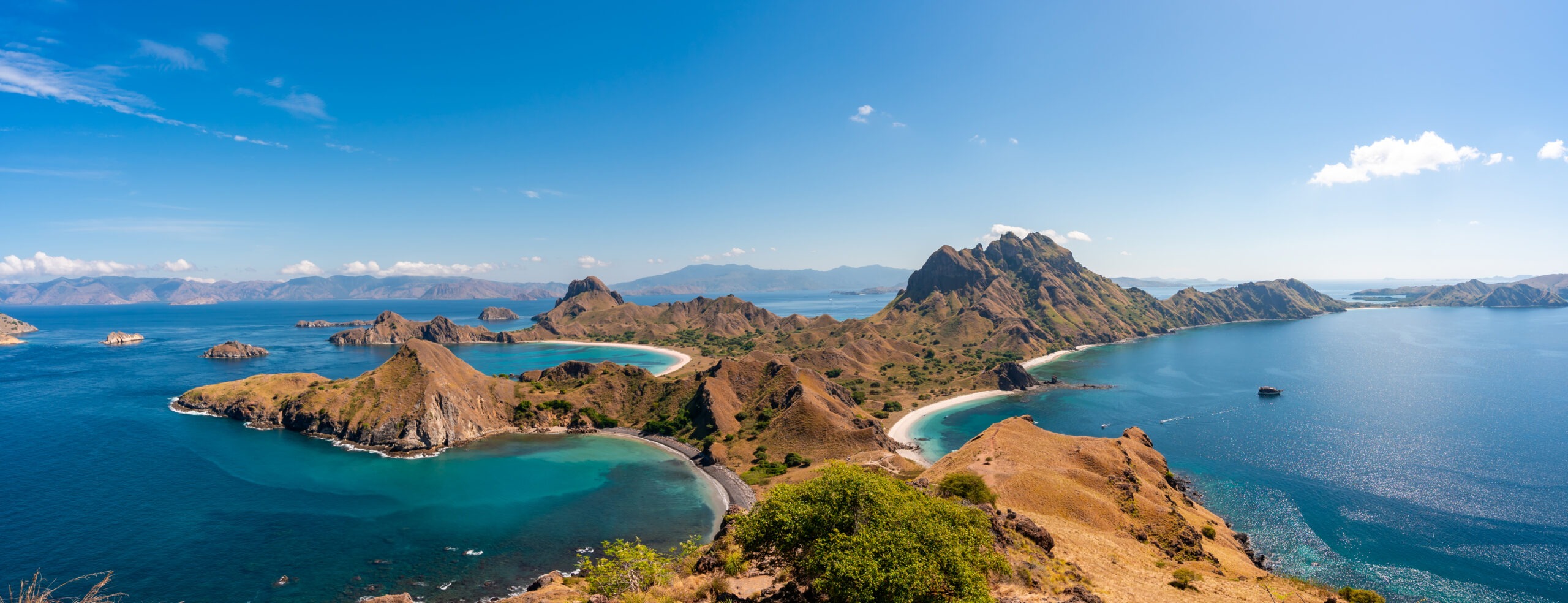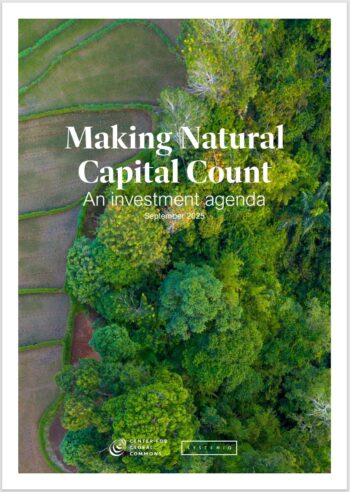A new report co-authored by Systemiq and global experts shows how to embed nature in economic decision-making across policy, business and finance.
Nature underpins directly over half of global GDP, our societies, and our very survival. Yet it remains largely invisible in economic and financial decision-making, leading to further global nature degradation. A new report, Making Natural Capital Count – an investment agenda, calls for urgent action to change that.
The report launched at New York Climate Week is co-authored by Systemiq (Guido Schmidt-Traub, Veerle Haagh, Boris Vergote, Oscar Ibsen, and Rebecca Nohl) and Naoko Ishii (University of Tokyo, Center for Global Commons), with close engagement of Amar Bhattacharya (co-chair IHLEG, Brookings Institution) and Eleonore Soubeyran (London School of Economics). It is a companion report to the Independent High-Level Expert Group on Climate Finance (IHLEG) and complements IHLEG’s core reports ahead of COP30 in Belém.
The paper has a clear message – treating nature as economic infrastructure is essential for prosperity, resilience and fiscal stability, and highlights the following key findings:
- Nature is underfunded: Less than 0.1% of public budgets gets allocated to natural capital
- Economic risk: The collapse of just four ecosystem services could wipe $2.7 trillion from global GDP by 2030, with low-income countries hardest hit.
- Investment need: $400 billion a year is needed by 2030 – just a quarter of the $1.7 trillion now spent on harmful subsidies – alongside redirecting trillions of existing investments into practices that steward natural capital.
- High returns: Every $1 invested in land restoration yields $7–30 in economic benefits – boosting jobs, growth and resilience. Degraded land and forests present some of the largest opportunities for jobs, growth and resilience.
- Private capital potential: Carbon pricing at $100 per tonne CO₂e could mobilise $700 billion annually into natural capital and agriculture, while cutting global emissions by a fifth.
The economic case for nature
Prosperous economies rely on produced, social and natural capital as economic infrastructure. Degrading or underinvesting in any of them undermines growth and creates macro-critical risks.
Nature loss and climate change are converging risks. They are already driving up sovereign risk, disrupting food and insurance markets, and hitting growth. At the same time, a revolution in data and tools now makes it possible to measure and manage natural capital at scale.
Invisible yet vital
Natural capital is largely absent from economic decision-making, resulting in further nature degradation. Bringing it onto public and private balance sheets would raise recorded wealth, strengthen fiscal space and lower sovereign risk.
Two-thirds of the investment is needed in Emerging Markets and Developing Countries (excl. China), where risks are greatest, but resilience gains are strongest.
Turning evidence into action
We can measure and value nature – now policy and capital markets must reward it. The report urges finance ministers, central bankers, CEOs, investors and regulators to act now:
- Governments should integrate natural capital into budgets, debt frameworks and investment plans.
- Businesses should embed nature into strategy, capital allocation and risk management.
- Financial institutions should price ecosystem risk into markets and expand nature-based asset classes.
International cooperation is critical, especially to steward the world’s tropical forests and ocean. Shared data, open-access infrastructure and alignment across markets can cut costs and accelerate adoption.
Decisions taken this decade will set the course for either escalating systemic risk or long-term prosperity.

“Biodiversity isn’t a niche agenda – it is central to economic resilience, human well-being, and climate stability. To make it real, we must bring biodiversity into every balance sheet, policy and investment decision – and repurpose subsidies that drive harm, redirecting them towards protecting and restoring nature.”
Astrid Schomaker
Executive Secretary (Convention on Biological Diversity, United Nations)
“Countries and companies around the world face rapidly raising risks from nature and fail to recognise one of the potentially most valuable assets on their balance sheets. Valuing nature is critical for climate finance and indeed international finance.”
Dr. Naoko Ishii
Special Presidential Envoy for Global Commons, University of Tokyo


“90% of the world’s natural capital is in developing countries, but 80% of the spending on natural capital is in the rich world. Restoring degraded land is one of the largest untapped opportunities – it delivers climate mitigation, livelihood security, and economic returns all at once.”
Amar Bhattacharya
Co-chair IHLEG, Brookings Institution
“There is a direct incremental funding need of approximately $400 billion a year for natural capital – but that is just the floor. To truly bend the curve, an even larger volume of capital must be redirected toward stewardship of natural capital.”
Guido Schmidt-Traub
Partner at Systemiq



